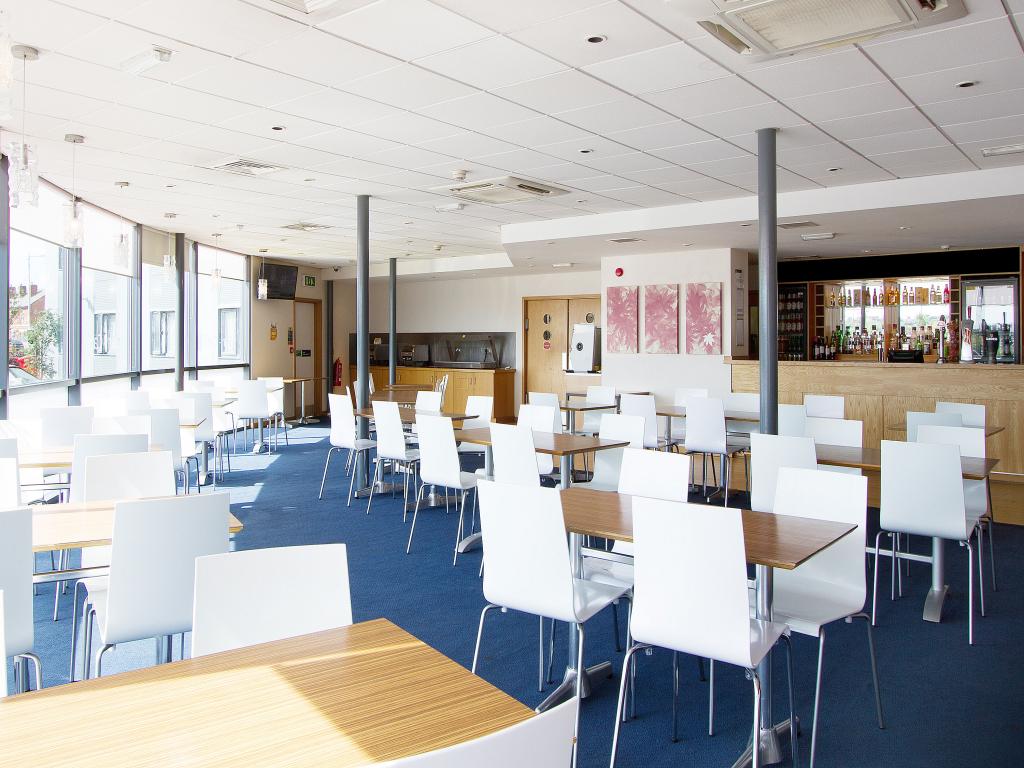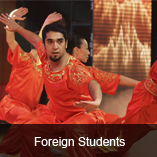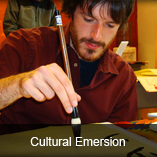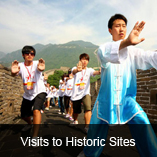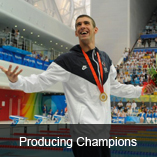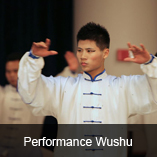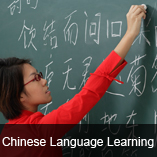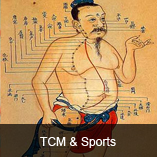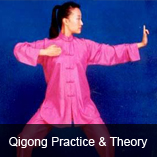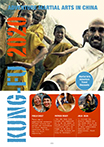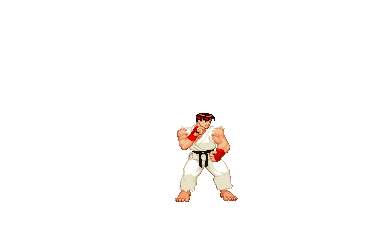Traditional Chinese Medicine, also known as TCM; includes a range of traditional medical practices from China. Often viewed as an alternative medical system in the west, it is considered part of mainstream medical care in east Asia. TCM practices include: herbal medicine, acupuncture, dietary therapy, both Tui na and Shiatsu massage, qigong and aspects of Chinese martial arts. TCM comes from a meticulous observation of nature, the cosmos, and the human body. Its major theories include those of Yin-yang, the Five Phases, the human body Channel system (Meridian theory) and Zang Fu organ theory.
TCM sees the human body as a small universe with a set of complete and sophisticated interconnected systems. Those systems usually work in balance to maintain the healthy function of the human body. The balance of yin and yang is considered with respect to qi ("breath", "life force", or "spiritual energy"), blood, jing ("kidney essence", including "semen"), other bodily fluids, the Wu Xing, emotions, and the soul or spirit (shen).
TCM has a unique model of the body, notably concerned with the meridian system. Unlike the Western anatomical model which divides the physical body into parts, the Chinese model is more concerned with function. Thus, the TCM spleen is not a specific piece of flesh, but an aspect of function related to transformation and transportation within the body, and of the mental functions of thinking and studying.
Traditional Chinese Medicines macro philosophy of disease means its diagnostics are based on an overall observation rather than "micro" level laboratory tests. For this eight guiding principles are employed to analyze and differentiate the energetic imbalances in the body or the nature of a patient’s condition using four diagnostic methods.
The four types of TCM diagnostic methods are: observe (wàng), hear and smell (wén), ask about background (wèn) and touching (qiè). The pulse-reading component of the touching examination is so important that Chinese patients may refer to going to the doctor as "Going to have my pulse felt." These methods are extremely important as considerable diagnostic skill is required to understand the full complexity of symptoms and dynamic balances.
The Eight Guiding Principles of TCM
TCM practitioners employ the Eight Guiding Principles to analyze and differentiate the energetic imbalances in the body, or the nature of a patient’s condition. The eight guiding principles actually consist of four polar opposites: yin/yang, cold/hot, deficiency (xu)/excess (shi), and interior/exterior.
Cold/Hot: This principle is used to determine the overall energy of the patient. A cold condition would be one marked by a slow metabolism, chills, pale skin, and a low-grade fever, while a hot condition would be characterized by a heightened metabolism, sensations of heat in the body, high fevers, and a flushed complexion.
Interior/Exterior: This principle describes symptoms in terms of the location of the patient’s problem. Exterior conditions are those caused by the invasion of the body by pathogens, and are usually acute and superficially located with a short duration. Exterior symptoms are those that affect the hair, skin, muscles, joints, peripheral nerves and blood vessels. Interior conditions result from pathogens that enter the interior of the body. Interior symptoms affect the organs, deep vessels and nerves, brain, spinal cord, and bones.
Deficiency/Excess: This principle describes the strength of an illness. In TCM, a deficient condition would be viewed as a lack of blood (such as in anemia), energy (Qi), heat, or fluids. Chronic illness would fall in this category. An excess condition, by contrast, means that the body has too much of something, such as qi or blood. In TCM, an acute condition would be seen as an excess condition.
Yin/Yang: These principles are the generalization of the above principles, and a condition can be categorized in terms of the relative dominance of either yin or yang. In Chinese medicine, all organisms have both yin and yang qualities and a balance of the two is necessary for good health. In general, yin energy is associated with cold, female energy, and represents the solid organs. Yang is associated with hot, male energy, and represents the hollow organs. Chronic illness is seen as yin, while acute illness is seen as yang.
According to TCM, the combination of these principles determines the nature or quality of the three constituents of the body, which are energy (qi), moisture, and blood. As described above, qi is vital life energy. Moisture is the liquid medium which protects, nurtures, and lubricates tissue, and blood is the material foundation out of which we create bones, nerves, skin, muscles, and organs.
TCM practitioners diagnose health problems using various combinations of the eight guiding principles. For example, a patient might be diagnosed as having an "internal cold" or "external heat" condition. Used in conjunction with the five element theory, the eight guiding principles give the TCM practitioner a more complete picture of a patient’s energy imbalances and determine the treatment to be pursued through acupuncture, herbs, diet, and exercise.
The Techniques for diagnosis are:
• Palpation of the patient's radial artery pulse (pulse diagnosis) in six positions.
• Observations of patient's tongue, voice, hair, face, posture, gait, eyes, ears and the vein on the index finger of small children.
• Palpation of the patient's body (especially the abdomen, chest, back, and lumbar areas) for tenderness or comparison of relative warmth or coolness of different parts of the body.
• Observation of the patient's various odors.
• Asking the patient about the effects of their problem.
• Anything else that can be observed without instruments and without harming the patient.
• Asking detailed questions about their family, living environment, personal habits, food diet, emotions, menstrual cycle for women, child bearing history, sleep, exercise, and anything that may give insight into the balance or imbalance of an individual.
Methods considered part of Traditional Chinese medicine: Acupuncture, Chinese herbal medicine, Cupping, Gua Sha, Moxibustion, Physical Qigong Exercises, Qigong, Tui na Massage, Die-da or Tieh Ta and Chinese food therapy.
Traditional Chinese medicine healing is a multidimensional process and understands that the body, mind, spirit and emotions must all be addressed in the healing journey. The mind and the emotions, which are the actions of the mind, play a powerful role in creating wellness or illness, and attracting disease.
All of these aspects and their relationships are mapped out in the theories that form the foundation of TCM: the theory of yin/yang, the theory of qi (or vital energy), meridian theory and the five-element theory. It is important to understand that these concepts and principles are not the product or result of scientific or rational thinking. They are based on a perception and deep understanding of natural law—how the universe really works at the level of energy.
One of the main goals of TCM is to identify and treat the root cause of conditions so that the healing is genuine and the condition does not reoccur. It's interesting to know that TCM doctors in ancient times were paid only if their patients remained well. The body has many ways of signaling imbalances; some can lead to more serious health problems if left untreated in a timely way. When these signs and signals are recognized and addressed early on in the healing process, you can achieve and maintain good health. In terms of treatment, TCM uses a variety of natural healing modalities to spark the individual's innate healing capacity. With health difficulties, this self-healing ability can become dormant, but it responds to natural forms of treatment and becomes active once again.
One very effective TCM specialty is prevention. As part of the healing process, each person should learn about lifestyle choices and their impact on wellness—how what he or she does, thinks and feels contributes to their state of wellness.
Qigong is an essential component of Traditional Chinese Medicine and a powerful system of healing. It is the art and science of using breathing techniques, gentle movement, and meditation to cleanse, strengthen, and circulate the life energy (qi). Qigong practice leads to better health and vitality and a tranquil state of mind. Qigong can also be called Nei Gong (inner work) and Dao Yin (guiding energy).
The documented history of qigong goes back approximately 2,500 years. However Chinese archaeologists and historians have found references to qigong-like techniques at least five thousand years old.
Because qigong includes both dynamic and gentle techniques that can be practiced from standing, seated, and supine postures, it is suitable for young and old. Practices can be tailored to individual needs making it an ideal aid to recovery from illness or injury. Qigong is a form of complementary medicine, working well with other forms of therapy, but it should not be a substitute for necessary treatment by a physician.
Qigong for health and healing involves two major areas of application:
1. Healing Qigong (Yi Gong). Healing Qigong (sometimes translated "Medical Qigong") is the preventive and self-healing aspect of Chinese medicine. We are all exposed to stress. Qigong teaches us how to control our reactions to stress so that life’s events do not cause such symptoms as high blood pressure, frustration, or anxiety. Healthy people practice qigong to become super-healthy. Healers use qigong to prevent "healer burn-out" and to maintain a positive presence.
2. External Qi Healing (Wai Qi Zhi Liao). Qigong includes a sophisticated system of health assessment and non-contact treatment called External Qi Healing (EQH). The healer learns to tap into a well of healing energy in nature and "funnel" it through his or her body. Unlike some purely intuitive systems, EQH includes exercises that increase sensitivity to energy fields and efficacy of treatment. The more you practice External Qi Healing exercises and meditations, the more effective your healing treatment. External Qi Healing techniques may be used as a stand alone form of wellness treatment or may be combined with qigong massage, acupuncture, Therapeutic Touch, osteopathy, or any other form of body-work. Because treatment is generally performed at a distance from the body, EQH does not violate psychotherapists' professional ethics (which do not allow the touching of a patient) and is thus an ideal adjunct to body-centered psychotherapy.
Active Healing Qigong Exercises
In order to get the maximum health benefits from qigong self practice, moving or active qigong is believed to be more important than sitting or still meditation. This is because moving exercises increase qi circulation in specific organs and so restore their normal functions. Active Qigong is for maintaining health and longevity and curing illnesses caused by qi imbalances.
If you’re primarily interested in qigong for longevity qigong exercises derived from the Marrow/Brain washing classic are what you should learn. If you wish for a strong and healthy body you should learn the qigong exercises derived from the Muscle/Tendon Changing Classic (these qigong exercises are not only good for health, but increase the power of martial arts techniques).
Both these books where written by Da Mo the famous Indian Buddhist priest who brought Zen or Chan Buddhism to China. He imparted these works to the Shaolin priests so that they where strong enough for the rigors demanded of their training for enlightenment. Ideally a combination of exercises derived from these works will be the most beneficial.
Four Simple types of Active Qigong for health are:
Ba Duan Jin (Eight excellent movements),
Wu Qin Xi (Frolics of five animals),
Yi Jin Jing (tendon changing classic),
Liu Zi Jue (The art of expiration in producing six different sounds)
Ba Duan Jin (Eight excellent movements)
Ba Duan Jin, a traditional Chinese health and fitness Qigong exercise routine dated back to the Song Dynasty (960-1279), is a gem in China's health and fitness culture.
As a safe aerobic exercise, it features a movement of intensity and format in line with the theories of kinetics and physiology. Added to the traditional eight movements, are sections on the preparatory posture and closing form, making the exercises more complete, standardized and rational.
It has been proved that practice of Ba Duan Jin improves the respiratory system, limb strength, and flexibility of the joints, and fortifies the nerves, as well as enhances the general balance. It improves the cardiovascular function and helps to cure illnesses such as coronary artery scleroses and osteoporosis. It strengths one's immune system to a degree, and delays the ageing process, so as to increase the life span. It also improves one's mental health.
Wu Qin Xi (Frolics of five animals)
Wu Qin Xi, imitating the movements of animals, is a group of physical breathing exercises for health care with a uniquely Chinese national flavour. The system was designed by Hua Tuo, a leading physician of the Eastern Han Dynasty (25-220 AD). He developed his system based on existing ancient Chinese traditional physical exercises following theories of the functions of the internal organs and meridians as well as the principles of the circulation of qi and blood in the human body. His inspiration came from careful observation of the characteristic behaviour and activities of tigers, deer, bears, monkeys and birds. He came to the conclusion that wild creatures regularly performed certain exercises to build up their constitution and improve their life skills. In this book, the physical movements and spiritual expressions of those creatures are vividly described, and the principles of traditional Qigong exercises are used as guidance for students. During practice of the exercises, they are asked to coordinate their mind with the movements, and combine internal exercises with external exercises.
Movements are comparatively simple and easy to master and are suitable for people of different age groups.
Experience has proved that after a certain period of practice, both the physical and the mental health are improved. Indeed, physical and psychological tests of people who practice Wu Qin Xi give high scores to their overall constitution, the functions of the various organs, mental attitude and power of perception, as well as physical fitness. In addition, the waistline and ratio between waist and buttocks in female practitioners are reduced, the cardiovascular and respiratory functions are markedly improved, and the grip strength is reinforced. The exercises enhance bodily strength, flexibility of joints, spiritual vitality and psychological confidence.
Yi Jin Jing (tendon changing classic)
Yi Jin Jing is a health and fitness exercise handed down from ancient China.
Yi Jin Jing focuses on the turning and flexing of the spine, thus invigorating the limbs and internal organs. These movements have been proved to be able to improve health and fitness, prevent diseases, lengthen life and improve the intellect. In particular, practice of the Yi Jin Jing exercises has very impressive effects on the respiratory system, flexibility, balance and muscular strength. It can also prevent and cure diseases of the joints, digestive system, cardiovascular system and nervous system.
Yi Yin Jing requires the practitioner to keep his or her spirit totally relaxed. It involves an integration of mind and body, natural breathing, gentle movements infused with strength, and an interplay of the insubstantial and the substantial. Easy to learn and perform, this refreshing exercise has impressive health and fitness effects, and is adaptable to all age groups.
Liu Zi Jue (The art of expiration in producing six different sounds)
Liu Zi Jue is a traditional health and fitness practice focused on control of the breath.
Liu Zi Jue regulates and controls the rise and fall of Qi (vital energy) inside the body and related inhalation and exhalation through different mouth forms (six in all) to breath and pronounce the "XU, HE, HU, SI, CHUI, and XI" exercises. These exercises strengthen the liver, heart, spleen, lungs, kidneys and Sanjiao (the three portions of the body cavities housing the internal organs) respectively and help to balance the energy and functions of the inner organs.
These exercises are slow, gentle and graceful and are easy to learn. They are suitable for people of all ages and conditions of health.
Liu Zi Jue is safe and reliable and it helps to cure chronic diseases such as hypertension, hyperlipidemia and high blood sugar. Surveys reported that the practitioners found general improvement of quality of life, and an improvement of social and family relationships. It is believed that such an effect is the result of gentle breathing movements which calm the feelings and emotions.
